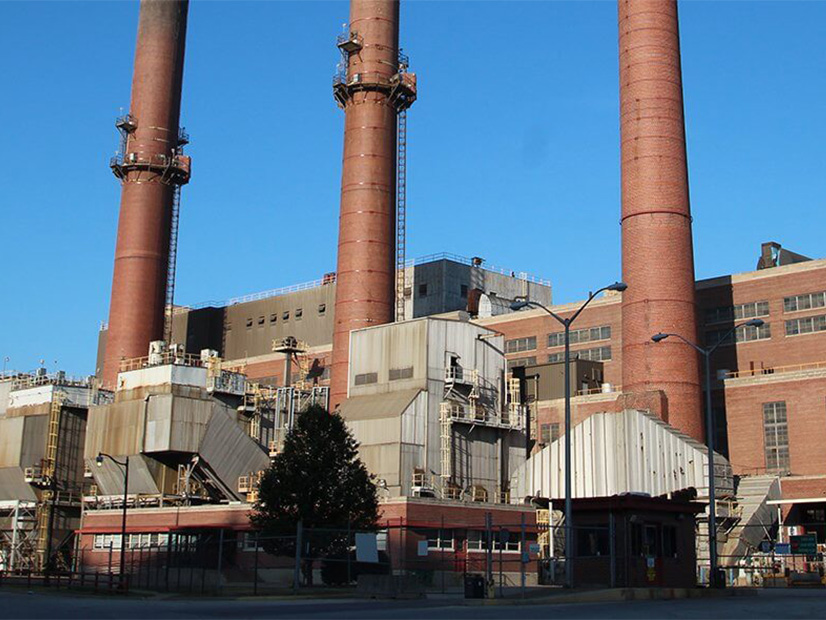
AES Indiana’s Eagle Valley natural gas plant is offline because of disconnected wires and ruptured pipes at least until June.
| AES IndianaFaced with a capacity supply shortage in the 2022/23 planning year, MISO is considering broadening its generator retirement studies to consider resource adequacy.
During an April 27 Planning Advisory Committee meeting, MISO’s Sydney Yeadon said the grid operator is considering changes to its Attachment Y process — the procedures it uses to study whether retiring generation needs to stay online longer under a System Support Resource agreement.
MISO’s current evaluation process focuses solely on the reliability impacts of the retirement to the transmission system.
Yeadon said MISO’s capacity shortfall for 2022/23 is causing it to consider whether it should expand the study to include resource adequacy impacts and mitigation options. (See MISO’s 2022/23 Capacity Auction Lays Bare Shortfalls in Midwest.)
“A trend of increased retirements is developing quickly across the footprint,” Yeadon said, adding that while MISO respects states’ jurisdiction over resource adequacy decisions, the retirements are causing the Midwest footprint to feel a supply squeeze.
MISO said EPA regulations, paired with renewable energy and greenhouse gas emissions targets, are “rushing generation to retirement.” The grid operator singled out the EPA’s recent Good Neighbor NOx pollution limits and coal ash regulations. (See EPA Coal Ash Enforcement Impacts Midwest Coal Plants.)
According to the Institute for Energy Economics and Financial Analysis’ 2022 U.S. Power Outlook, 99.2 GW of coal-fired generation in the U.S. is expected to retire or be converted to natural gas from 2021 through 2030. The nonprofit said it expects more closure announcements on top of that.
“I completely disagree with MISO blaming coal retirements … on EPA regulations and state goals,” Sustainable FERC Project attorney Lauren Azar said.
Azar said even during her time as a Wisconsin Public Service Commissioner more than a dozen years ago, it was “abundantly clear” that coal plants were going to retire at an unprecedented rate while renewables were poised for growth.
“Instead, I would look in the mirror,” Azar said to MISO staff. “We are unable to connect generators in much of MISO because of insufficient transmission capacity. … I’m less than articulate right now; I’m pretty wound up.”
MISO’s Andy Witmeier said MISO wasn’t trying to blame regulations for the poor resource adequacy showings.
Minnesota Public Utilities Commission staff member Hwikwon Ham pointed out that five years ago, MISO ended its regional transmission overlay study with some members convinced that federal regulations weren’t on the horizon. That 2017 study was designed to identify long-term transmission needs under a shifting resource mix; MISO did not recommend any transmission projects from the study.
All the while, Ham said, Wall Street was trending toward decarbonization.
“We really need to pay attention to money,” he said.
America’s Power CEO Michelle Bloodworth said MISO’s retirement studies must consider resource adequacy.
Bloodworth said EPA regulations are “putting pressure on dispatchable resources to retire when they still have economic life left in them.” She asked for MISO to “send signals for those resources to stay as long as they’re needed.”
Stakeholders asked if MISO will simply conduct deeper analysis and share the results with states, which have final say over resource adequacy decisions.
MISO staff said the first discussions will focus on how it can improve its retirement studies, which are becoming more frequent.
MISO plans to hold discussions on improvements in meetings of the Planning Subcommittee through summer; however, stakeholders said the topic might be better left to the Resource Adequacy Subcommittee.
WPPI Energy’s Steve Leovy said assigning the initiative to the Planning Subcommittee was “confusing” given MISO’s many references to resource adequacy. Nevertheless, he said he agreed with the Planning Subcommittee as the starting forum.


